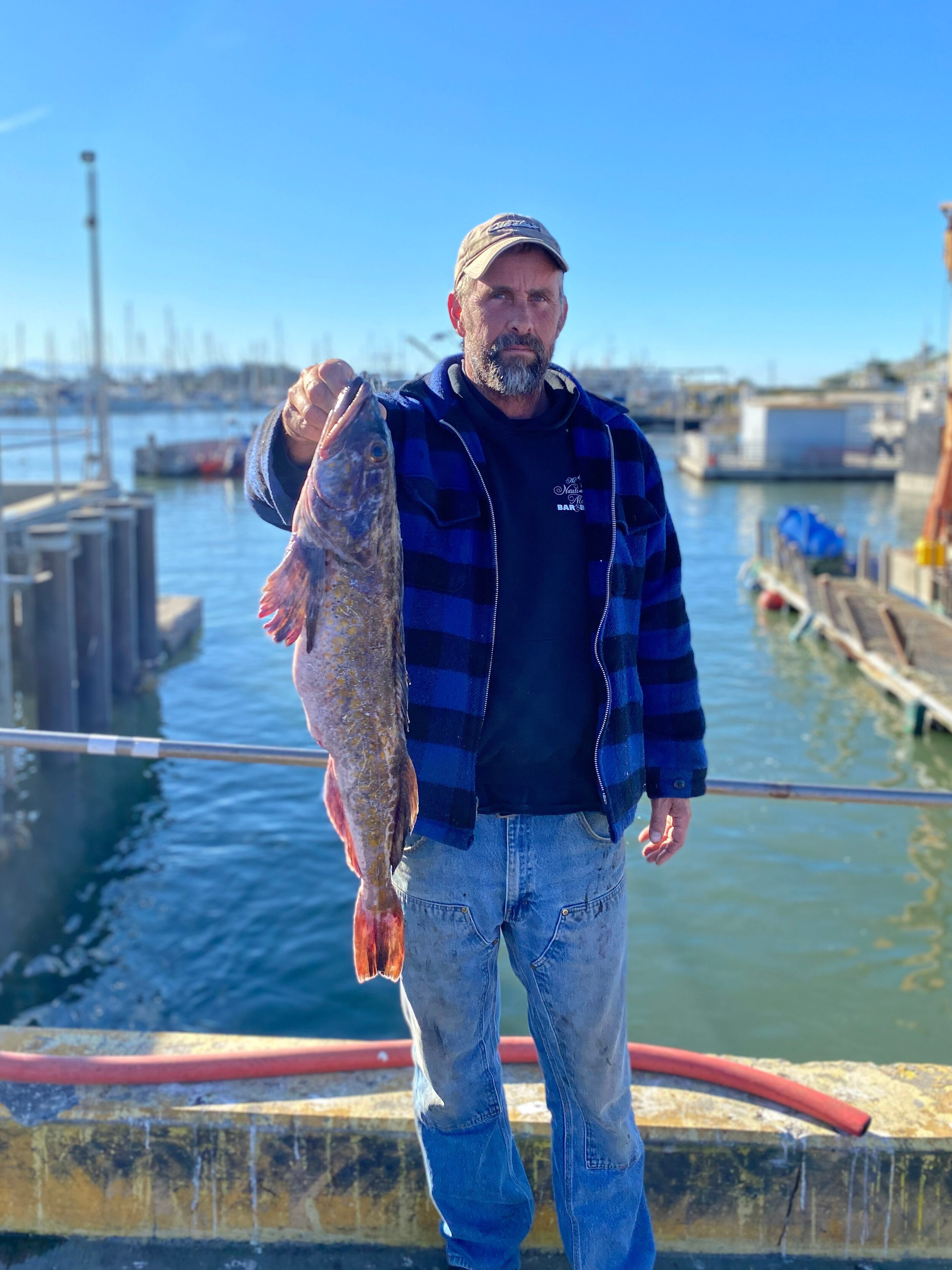Lingcod - What to know, when & where to get it
With big eyes, large heads, and gaping sharply-toothed mouths, lingcod have a ferocious appearance as well as a comical nickname: bucketheads. They’re not one of the most common species found on menus and fish counters, but those who know lingcod know they’re one of the tastiest fish around.
Captain Clint Beasley of the F/V Queen Corinne hold a fresh-caught lingcod in Moss Landing. Photo courtesy of Peter Adame/Lusamerica.
A lingcod is neither a ling nor a cod but was named as such for its resemblance to both those species of fish. They have greenish-gray and brown bodies with blotches of green and brown. Their flesh also carries a blueish-green tint that turns white after cooking. The large and tender mild-tasting flakes of lingcod fillets make them one a sought-after West Coast favorite for those familiar with them.
Their firm, versatile flesh makes lingcod great breaded and fried, baked, seared, or with just about any other preparation you can imagine. They’re also a great addition to cioppino and other seafood stews.
Buying Tips
Ask for fresh, local lingcod from your fishmonger or Community Supported Fishery (CSF).
━━━━
Be adventurous and try buying a whole lingcod and clean at home.
━━━━
Don’t be scared off by a greenish-blue tint to the flesh, the color completely fades through cooking.
Seafood Illustration courtesy of “Monterey Bay Aquarium®
Lingcod Recipes
Lemon Parmesan Lingcod with Garlic Butter
(Real Good Fish)
━━━━
Smoked lingcod
(Bradley Smoker)
━━━━
Herb-Crusted Lingcod Fillets
(Real Good Fish)
More about Lingcod
Lingcod: life, habitat, and management
Lingcod (Ophiodon elongatus) live along the Pacific Coast from the Gulf of Alaska to Baja California, with their largest populations found in Washington and British Columbia. Adults live on rocky seafloors around kelp and eelgrass and prey on bottom fish, crabs, octopus, and even smaller lingcod. Their coloring acts as camouflage on the ocean floor, and they often settle in holes and overhangs to protect themselves from predators like sharks and marine mammals.
Adult lingcod can reach five feet and 80 pounds. Males typically live up to 14 years and reach sexual maturity at two years, while females live up to 20 years and start reproducing at three years. Males become very territorial in late fall over shallow, rocky habitat ideal for spawning. Females often only stick around these areas long enough to lay their eggs in rocks and crevices during winter and spring months, trying to avoid the aggressive males. Males then guard the eggs from predators for eight to 10 weeks. Larval lingcod live closer to the surface, feeding on zooplankton.
Lingcod are harvested at sustainable levels according to stock assessments by NOAA and the Monterey Bay Aquarium Seafood Watch rates those caught with longlines and bottom trawls in California as “Best Choice.”
Where & When to Find Lingcod
Lingcod are accessible year-round, but as most are for export markets they’re not always easy to find.
You can buy lingcod directly from local restaurants, grocery stores, and fish markets —check out our Local Catch page for more information, or check out our recipes page for tips on how to store, prepare, and cook lingcod and other seafood.
Want a fun calendar to remind you of what is in season here in Monterey Bay? Download + print our seafood seasonality guide (downloadable pdf).





